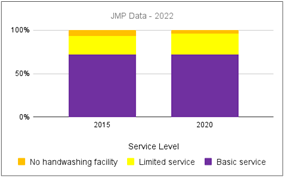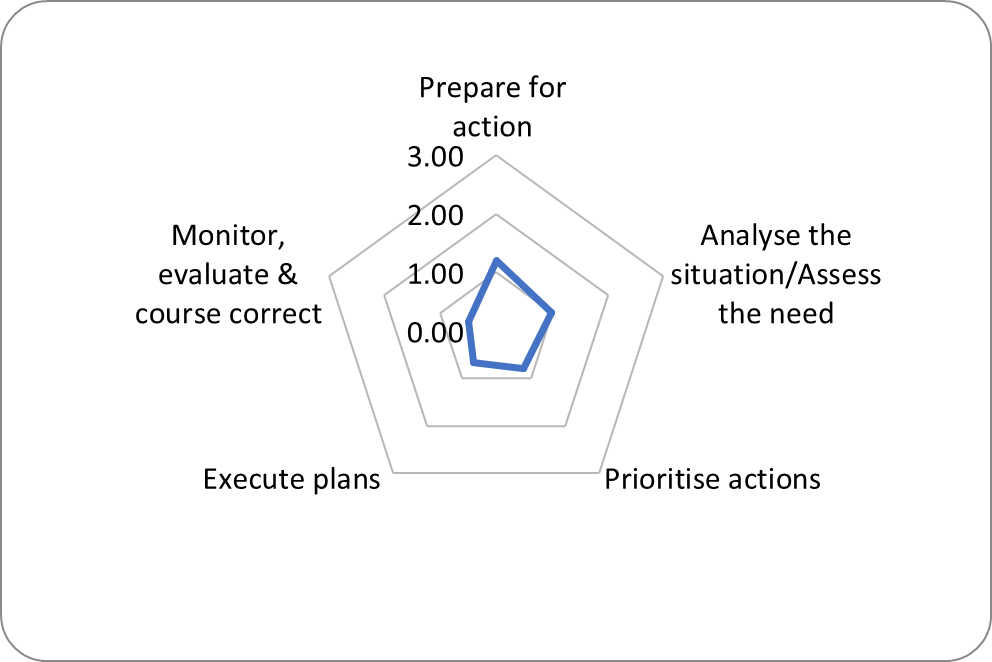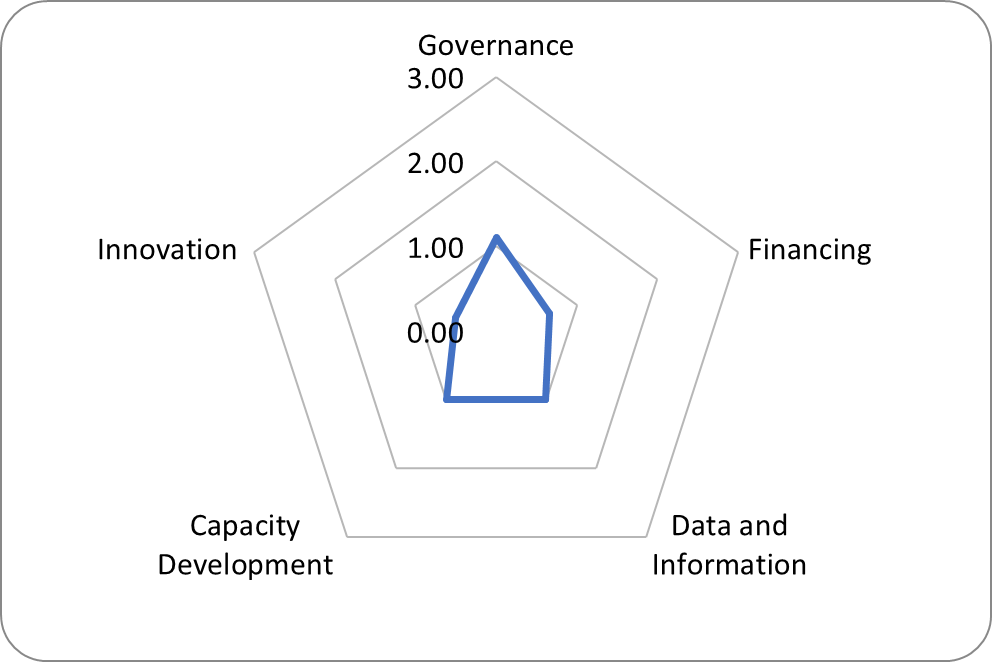Republic of Tajikistan
Almost ¾ of Tajiks have access to basic hand hygiene (HH) services, but the country has only experienced a 0.27% expansion in basic services from 2015 to 2020. Tajikistan’s score of 0.83 and 0.85 on the HHAFT Tracker and Assessment’s 4-point scale, respectively, reflect the fact that attention to universal HH is in its nascent stage; the Ministry of Health and Social Protection of the Population (MoHSPP) initiated the development of the HH4A roadmap at the end of 2022 which is planned to be endorsed by October 2023. Implementation of this roadmap will be key to progress, because although HH is incorporated into policies, there is no policy on universal HH and HH has not been championed by national leadership.

Tracker

| Milestone | 2023 |
|---|---|
| Prepare for Action | 1.20 |
| Analyse the Situation / Assess the Need | 1.00 |
| Prioritise Actions | 0.80 |
| Execute Plans | 0.67 |
| Monitor, Evaluate and Course Correct | 0.50 |
| Average | 0.83 |
Tajikistan’s low Tracker score is driven by limited situational understanding and preparation. While various strategic documents and initiatives identify needs and actions, they are not captured as data. Tajikistan also lacks specific national targets, indicators, standards, priority settings (although HH standards for institutions were recently established). However, stakeholders from various sectors are engaged in creating the roadmap.
Assessment

| Parameter | 2023 |
|---|---|
| Governance | 1.10 |
| Financing | 0.67 |
| Data and Information | 1.00 |
| Capacity Development | 1.00 |
| Innovation | 0.50 |
| Average | 0.85 |
Tajikistan’s MoHSPP serves as the lead HH ministry, spearheading the creation of the HH roadmap. While some institutional arrangements exist, a dedicated HH coordination mechanism is needed to delineate roles/responsibilities and avoid duplication. The private sector’s engagement in HH is mostly focused on local entrepreneurial initiatives (e.g., soap-making and advertising). Financing, monitoring and evaluation, and capacity building, are all hindered by the absence of a strategy and the will to execute it. The SDG cost of WASH is estimated, but does not directly address HH, nor is there a line item for HH in the national budget. Without institutional arrangements for coordination and pursuit of a dedicated financing strategy for HH, it will be challenging to develop and execute action plans or make strides toward these other parameters, whether it is creating a systematic M&E framework and centralized reporting system for tracking interventions and progress or conducting an analysis of HH capacity development needs and developing applicable curricula and tools.
